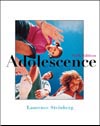What is the average class size in elementary schools, high schools, liberal art colleges, and large universities? How many students do teachers in each of these institutions see in a week? How much time do they spend with each student? How might these differences relate to the goals and means of instruction, the types of assignments teachers give, and students’ experience in the classroom?
Your college classroom has little in common with the one you experienced in
fifth grade. Your relationships with your teachers may be especially different.
Why? Although a psychologist might explain these differences in terms of the
personalities of people who chose to be elementary school teachers and those
who chose to become professors, another way to look at it is structural. How
big is the school? How much time do teachers spend with each student? How many
students do they have? How many teachers do the students have? This exercise
is designed to help you think about the classroom from a teacher's perspective.
 |
1 |  | 
How did secondary education change in America during the 20th century? Check all that apply. |
|  | A) | There was an increase in the number of adolescents enrolled in school. |
|  | B) | Students spend more days per year in school now than they did in the early 1900s. |
|  | C) | Adolescents spend more years in school now than they did in the early 1900s. |
|  | D) | Secondary education became compulsory in the early 1900s. |
 |
 |
2 |  | 
Which of the following is the best example of a task that encourages higher-order thinking? |
|  | A) | Memorizing multiplication tables. |
|  | B) | Debating the decision to ratify the U. S. Constitution. |
|  | C) | Dissecting a frog. |
 |
 |
3 |  | 
According to your book, what are some characteristics of good schools? Check all that apply. |
|  | A) | Good schools place importance on well-rounded students and encourage extracurricular activities. |
|  | B) | Good schools have teachers who are committed and autonomous. |
|  | C) | Good schools monitor themselves and their students in order to improve. |
|  | D) | Good schools are well integrated into the communities they serve. |
|  | E) | Good schools have a low teacher-to-student ratio. |
 |
 |
4 |  | 
Who will have the easiest school transition? |
|  | A) | Jessica, who is in the 6-3-3 arrangement and enters a high school with 600 students. |
|  | B) | Kim, who is in the 6-3-3 arrangement and enters a high school with 1500 students. |
|  | C) | Sarah, who is in the 8-4 arrangement and enters a high school with 600 students. |
|  | D) | Amy, who is in the 8-4 arrangement and enters a high school with 1500 students. |
 |
 |
5 |  | 
Which of the following is true of tracking? |
|  | A) | The peer culture is more positive in schools that use tracking. |
|  | B) | Tracking is beneficial for students in all tracks. |
|  | C) | Tracking is beneficial for bright students and harmful for lower-ability students. |
 |
 |
6 |  | 
The integration of all students with special needs into regular classrooms is known as |
|  | A) | mainstreaming. |
|  | B) | tracking. |
|  | C) | desegregation. |
 |
 |
7 |  | 
What are some explanations for the sex differences in math achievement during early adolescence? Check all that apply. |
|  | A) | Girls have fewer female role models of successful mathematicians and are less likely to consider careers that use math. |
|  | B) | The cognitive changes of early adolescence favor boys' math achievement. |
|  | C) | Girls receive pressure from their male peers not to excel in math class. |
|  | D) | High-ability girls are less likely to be assigned to the high-ability group than are high-ability boys. |
 |
 |
8 |  | 
Which of the following schools will best promote student achievement? |
|  | A) | A school where teachers are like authoritative parents, teachers have high expectations for students, and students do not overextend themselves with work or sports. |
|  | B) | A school where teachers are like authoritarian parents, teachers have high expectations for students, and students are heavily involved in work or sports. |
|  | C) | A school where teachers are like indulgent parents, teachers have low expectations for students, and students are heavily involved in work or sports. |
 |
 |
9 |  | 
What are some characteristics of postsecondary education in the United States? Check all that apply. |
|  | A) | Postsecondary education is accessible and diverse. |
|  | B) | The transition from high school to college is comparable to the transition from elementary to secondary school. |
|  | C) | A large proportion of minority youth are enrolled in college. |
|  | D) | The college graduation rate is much lower than the entrance rate. |
 |
 |
10 |  | 
Who are the 'Forgotten Half?' |
|  | A) | Students who do not get jobs after high school. |
|  | B) | Students who do not attend college. |
|  | C) | Students who drop out of college after the first year. |
 |



 2002 McGraw-Hill Higher Education
2002 McGraw-Hill Higher Education